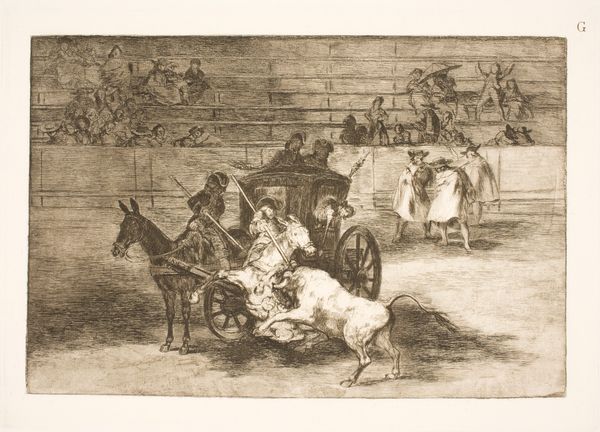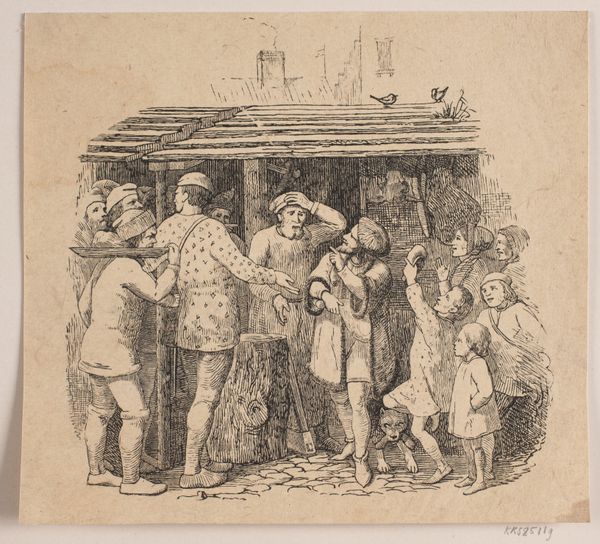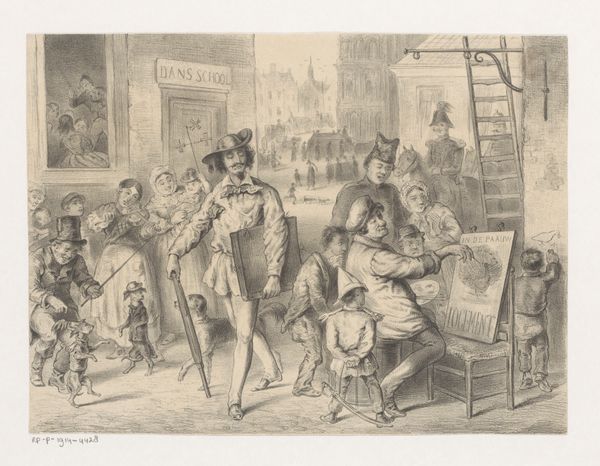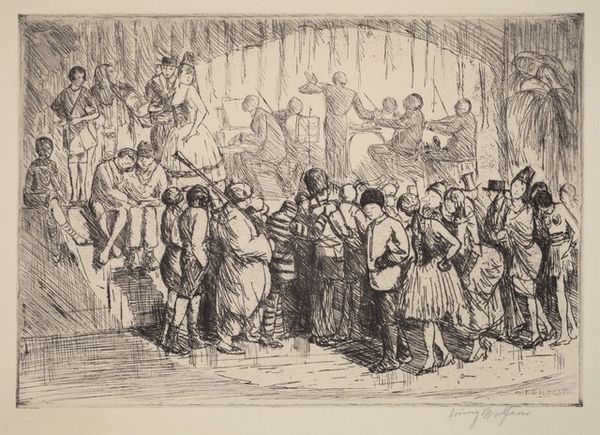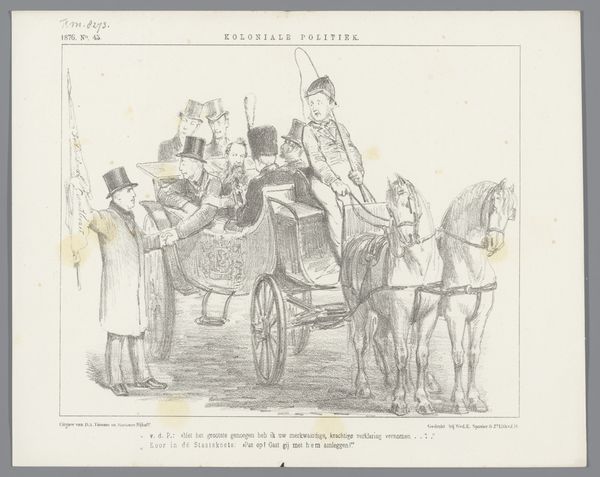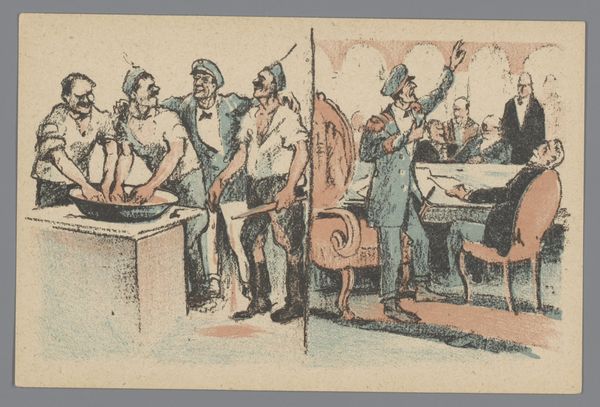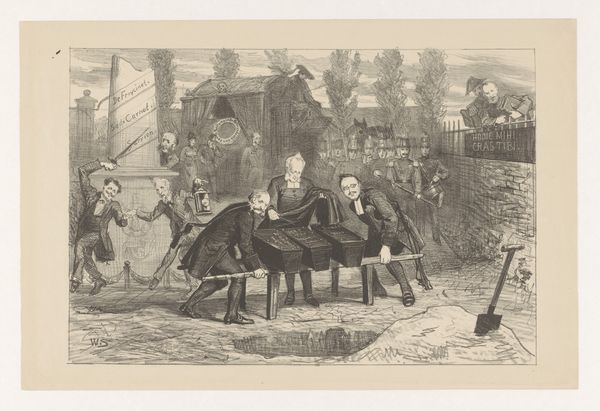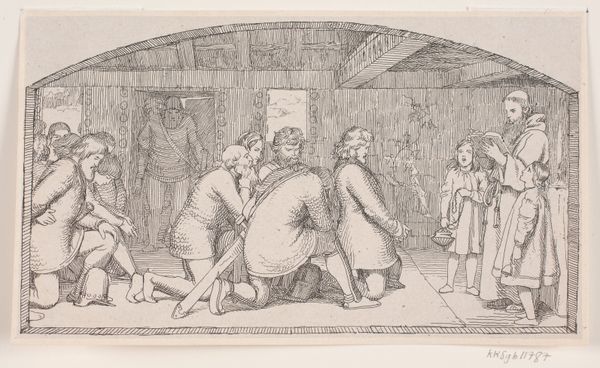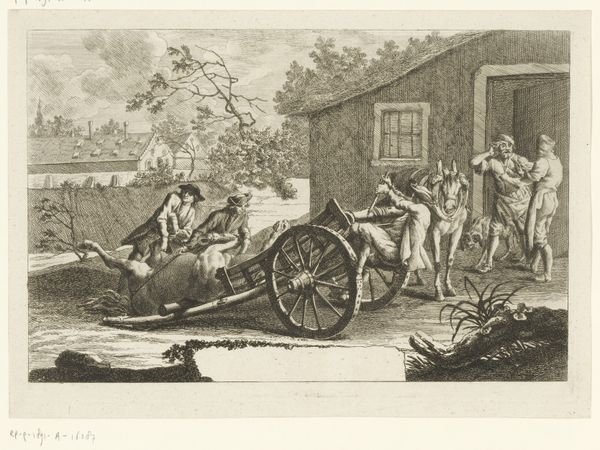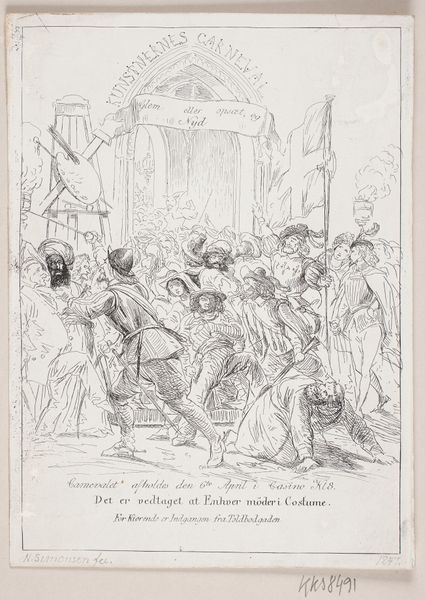
Hvorledes Uglspil fikserede den fromme bisp 1848
0:00
0:00
drawing, print, ink, woodcut
#
drawing
#
narrative-art
# print
#
ink
#
woodcut
#
genre-painting
Dimensions: 98 mm (height) x 122 mm (width) (bladmaal)
Curator: Welcome. Today, we'll be exploring Carl Peter Theodor Rothweiler’s "Hvorledes Uglspil fikserede den fromme bisp," created around 1848. It's a fascinating example of narrative art done in ink, specifically through woodcut printmaking, held in the collection of the SMK, the National Gallery of Denmark. Editor: My initial reaction is one of dark humour. There’s something undeniably mischievous in the air. The dense linework and crowded composition create a feeling of contained chaos, as though the scene is barely contained within the frame. Curator: Absolutely. The scene depicts a specific narrative moment. Considering the period, we see a blend of social commentary typical in genre paintings but within the context of Rothweiler’s broader engagement with popular narratives and folklore. The title roughly translates to something along the lines of 'How Owl-play Fixated the Pious Bishop' which already tells us about its content! Editor: I love that! Thinking about what ‘owl-play’ means metaphorically gives an instant entry point. It certainly suggests a sense of trickery or foolishness directed towards the Bishop. Considering that this work exists in 1848, a year marked by revolutions, one must consider if Rothweiler comments on religious authority here. Curator: Precisely. Look at how the figures around the cart are positioned and actively gazing at the bishop; consider how his gate creates a dividing space that contrasts the commoners' togetherness. Rothweiler positions the bishop as separate from what might be a kind of popular movement. It's hard not to see it as a comment on power dynamics of the period. Editor: And the individual crawling under the cart... what's happening there? Could they be sabotaging the cart, literally undermining the journey or purpose of this entourage? It feels like a symbolic act of resistance, playing on folk ideas of undermining structures from below. Curator: Indeed, and the intentional naivety of the medium reinforces this 'folksy' interpretation and allows Rothweiler to connect to an imagery easily understood and digested at the time. Editor: Rothweiler created a thought-provoking commentary with an economy of means, using accessible imagery to speak volumes about power, resistance, and social dynamics of his time. Curator: It encapsulates so many layers of societal critique and narrative power in a single frame.
Comments
No comments
Be the first to comment and join the conversation on the ultimate creative platform.
